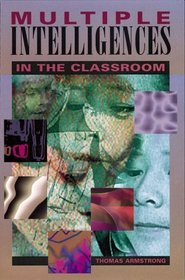Search -
Multiple Intelligences in the Classroom
Multiple Intelligences in the Classroom
Author:
"To respect the many differences between people"--this is what Howard Gardner says is the purpose of learning about multiple intelligences (MI). Now, in the 2nd edition of "Multiple Intelligences in the Classroom," Thomas Armstrong has updated his best-selling practical guide for educators, to incorporate new research from Gardner and others. Ga... more »
Author:
"To respect the many differences between people"--this is what Howard Gardner says is the purpose of learning about multiple intelligences (MI). Now, in the 2nd edition of "Multiple Intelligences in the Classroom," Thomas Armstrong has updated his best-selling practical guide for educators, to incorporate new research from Gardner and others. Ga... more »
ISBN-13: 9780871202307
ISBN-10: 0871202301
Publication Date: 1/1/1994
Pages: 185
Rating: 7
ISBN-10: 0871202301
Publication Date: 1/1/1994
Pages: 185
Rating: 7
4.1 stars, based on 7 ratings
Publisher: Association for Supervision & Curriculum Deve
Book Type: Paperback
Reviews: Amazon | Write a Review
Book Type: Paperback
Reviews: Amazon | Write a Review
Genres:
- Health, Fitness & Dieting >> Psychology & Counseling >> General
- Nonfiction >> Education >> General
- Nonfiction >> Education >> Education Theory >> Educational Psychology
- Nonfiction >> Education >> Pedagogy
- Science & Math >> Behavioral Sciences >> General





